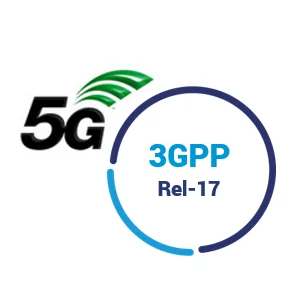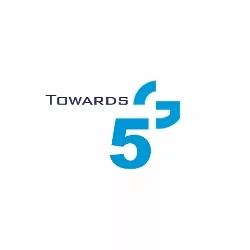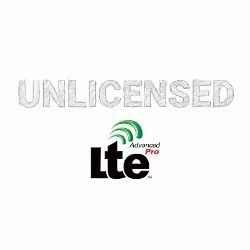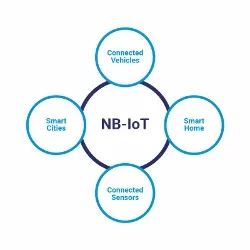
Well, well, well… 3GPP Release-17 is up in the air (and is about to be started soon). It will mostly be about enhancing and “further” enhancing 5G features in different areas. Regarding the overall timeline, the content of Rel-17 is to be defined in Q4 2019, and the aim is to froze it in Q3 2021 [1]. This post aims at providing you with the latest updates from the 3GPP regarding the potential features for that Release.
Note: If you are interested in the previous releases, you can check out the following posts: Release 15 here and here, while Rel-16 here, and here.
The Discussion Areas for Rel-17
As of now, the items likely to be incorporated within Rel-17 from the RAN perspective include the following (examples) [1]:
- NR-Light
- Small data transfer optimization
- Sidelink enhancements for NR
- NR for above 52.6GHz
- Coverage enhancements
- NB-IoT and eMTC enhancements
- NR for non-terrestrial networks
- Mobile Integrated Access Backhaul (IAB) enhancements
- RAN Data Collection Enhancements
- Power Saving Enhancements
- Positioning Enhancements
Whereas examples of the SA features include [1]:
- Supporting of Railway Smart Station Services
- Proximity Services in 5GS
- Enhancement of support for Edge Computing in 5GC
- Enhancements for the Support of Integrated access and backhaul
- 5G enhancements for UAV
- Enablers for Network Automation for 5G
- Enhancement of Network Slicing
- Enhanced Support for Industrial IoT
- Support for Minimization of Service Interruption
Below, you can find a short elaboration for each of the above items.
3GPP RAN Content for Rel-17 Under Discussion
Let us take a look at the example features to be decided in Q4 2019 if they make it to Rel-17 [2]:
NR-Light and Small Data Transfer Optimization – NR optimization for MTC type of devices, mostly related to power saving aspects, inactive data transmission,
Sidelink enhancements for NR – should focus on areas relating to V2X services, commercial and critical communications, including Frequency Range 2 (“mmWave bands”), to achieve maximum commonality between those services in terms of usage of Sidelink,
NR for above 52.6GHz – will include discussions and decisions on waveforms for frequencies higher than currently standardized, and the discussion on switching point for different waveforms, as well as the inclusion of 60GHz unlicensed spectrum
Coverage enhancements – should work on clarifications for all scenarios which are focusing on extreme coverage including both indoor and wide area,
NB-IoT, eMTC, Industrial IoT, URLLC enhancements – cover enhancements related to current commercial needs and deployments as well as some small leftovers from Rel-16, like header compression
NR for Non-Terrestrial Networks and Integrated Access Backhaul (IAB) enhancements – should include mobile IAB,
RAN data collection enhancements – focuses on data collection related to enabling of Artificial Intelligence (AI) for SON and MDT, as well as including the enhancements for SON and MDT themselves.
Power Saving Enhancements – with a focus on power saving related to smartphones and network-related power saving aspects.
Positioning Enhancements – shall include further adjustments for more accurate positioning services (like 3D-positioning and cm-level accuracy, latency and reliability improvements) on specific areas, like: IoT, V2X, factory positioning.
3GPP SA Content for Rel-17 Under Discussion
The following are example features from the 3GPP SA perspective for Rel-17 [2]:
Supporting of Railway Smart Station Services – aims at studying use cases for railway station operation monitoring and control, passenger supporting services, and evolution of business and applications already included together with analysis of the gaps from the requirements and functionality already provided from previous studies.
Proximity Services (ProSe) in 5GS – aims at developing a common framework for supporting proximity based services, by gap analysis between existing Rel-16 5GS architecture, functionalities, procedures and requirements of ProSe including roaming and non-roaming scenarios. The work should include two sets of objectives: public safety related ProSe, like support of one-to-many (and one-to-one) direct communications including out-of-coverage, and UE-to-UE relay; as well as commercial related ProSe, like system enhancements for Network Controlled Interactive Service (NICS)-related service requirements, including support of PC5 direct communications, support of group management and support of authorization and QoS enhancement for variety of services over PC5. Study should also include Mission Critical services over 5GS.
Enhancement of support for Edge Computing in 5GC – covers two objectives: study potential enhancements for edge computing support, including solutions to support forwarding of UE application traffic (like support for traffic steering in edge computing environment), impact on charging and policy control, ; study deployment guidelines for use cases like, URLLC, V2X, AR/VR/XR, 5GSAT, CDN.
Enhancements for the Support of Integrated Access and Backhaul (IAB) – item which aims at introducing architecture and system level enhancements to support IAB including, system level description of IAB architecture, and its integration within 5GS and EPS, support of capability indication of IAB nodes to the core network, and authorization of IAB nodes’ operation and signalling towards NG-RAN or EUTRAN.
5G enhancements for Unmanned Aerial Vehicles (UAV) – objective of this item is to document new KPIs and requirements to meet the industry applications and service needs to 3GPP subscription including: KPIs for command and control traffic, onboard radio access node, service restriction and network exposure for UAV.
Enablers for Network Automation for 5G (phase 2) – focuses on analytics for 5GC NFs to support their decision-making process including studying potential enhancements and new scenarios for network data analytics and deployment options for network data analytics function (NWDAF).
Enhancement of Network Slicing (phase 2) – aims at identification of gaps in the current 5GS system procedures to support Generic Slice Template (GTS) parameters and to study solutions to address those identified gaps – with the main goal to allow for more specific “slice boundaries”. It will include at least those parameters: maximum number of UEs per slice, maximum number of PDU sessions per slice, maximum data rates per UE in a slice.
Enhanced Support for Industrial IoT – covers enhancements for 5GS to enable support for Time Sensitive Communications (TSC) and deterministic applications. Those incorporate: enhanced support for integration with IEEE Time Sensitive Networking (TSN), including support for UL synchronization with 5GS, support for multiple clock domains connected to UE; enhanced support for deterministic applications, including UE-UE TSC communication via the same UPF, exposure of NW capability to support TSC, like deterministic services and time sync.
Support for Minimization of Service Interruption (MINT) – should specify normative service requirements with regard to ensuring the behavior of UEs supporting MINT taking into account existence of disaster condition, or enabling the system to prevent congestion due to incoming large number of roaming UEs related to disaster situation as well as handling of restrictions related to disaster condition.
Summary note
Taking a look on the above items, we may have a feeling that 3GPP Rel-17 is a “clean-up” from Rel-15 and Rel-16 being the basic for 5G. There are a lot of gaps and missing elements, as well as enhancements to be looked up. 3GPP should “sort-of” take a direction to address the specific needs that are being shaped by the industry with regard to the large 5G scope. There are of course a “more-looking-forward-features”, but the majority of items focus on making 5G a “usable” animal.
References
[1] https://www.3gpp.org/release-17
[2] http://www.3gpp.org/DynaReport/FeatureListFrameSet.htm
Note: ETSI is the copyright holder of LTE, LTE-Advanced and LTE Advanced Pro and 5G Logos. LTE is a trade mark of ETSI. Grandmetric is authorized to use the LTE, LTE-Advanced, LTE-Advanced Pro and 5G logos and the acronym LTE.







Hi Mr. Dryjanski,
I saw some documents related to outdoor to indoor enhancements, but nothing on extending coverage on rural areas or enhancing the data throughput in extreme coverage scenario. Do you have more details on coverage enhancements work and study items?
Best Regards,
Hi Gustavo,
regarding the coverage enhancements, the proposals are e.g. included in the following TDocs: 3GPP RP-191887 “New SID on NR coverage enhancement”, or in 3GPP RP-191886 “Summary of email discussions”, or in 3GPP RP-191761 “Further views on Rel-17 coverage enhancements work area”, where the outdoor enhancements relate to FR1 refarming from 2G/3G/4G scenarios. The extreme coverage relate to the KPIs from 38.913, where the target value for this use case is 164dB of MCL. As of now (from RP-191887, the studied solutions should include reduction/elimination of coverage imbalances and backward compatiblity aspects) – at least this is what the SID includes.
Hope this helps,
Marcin